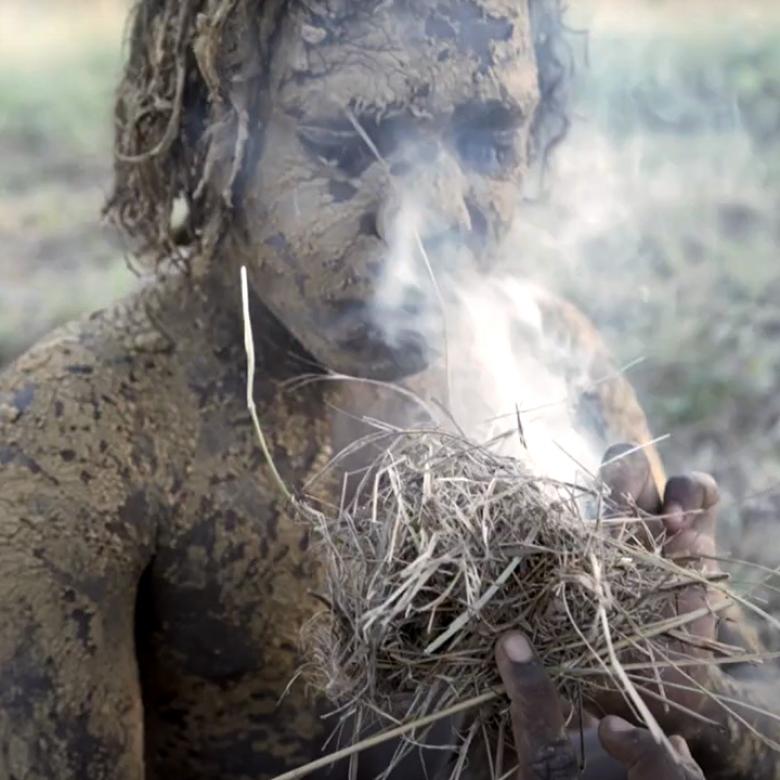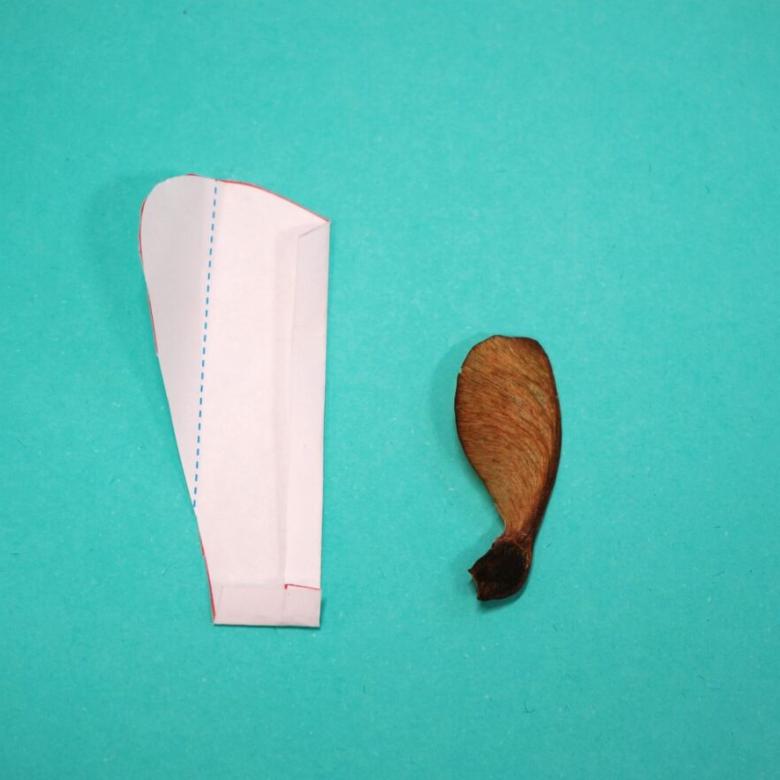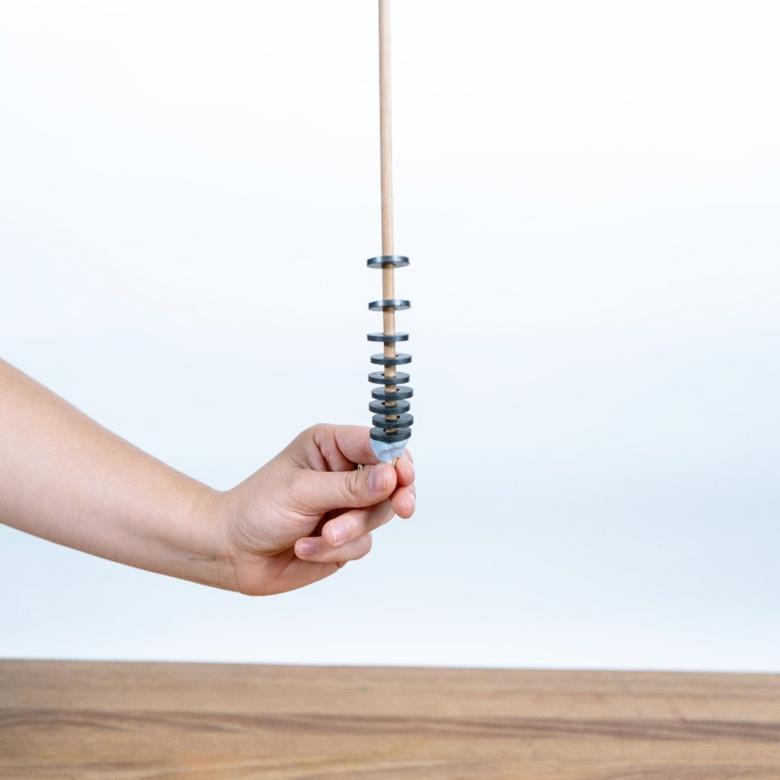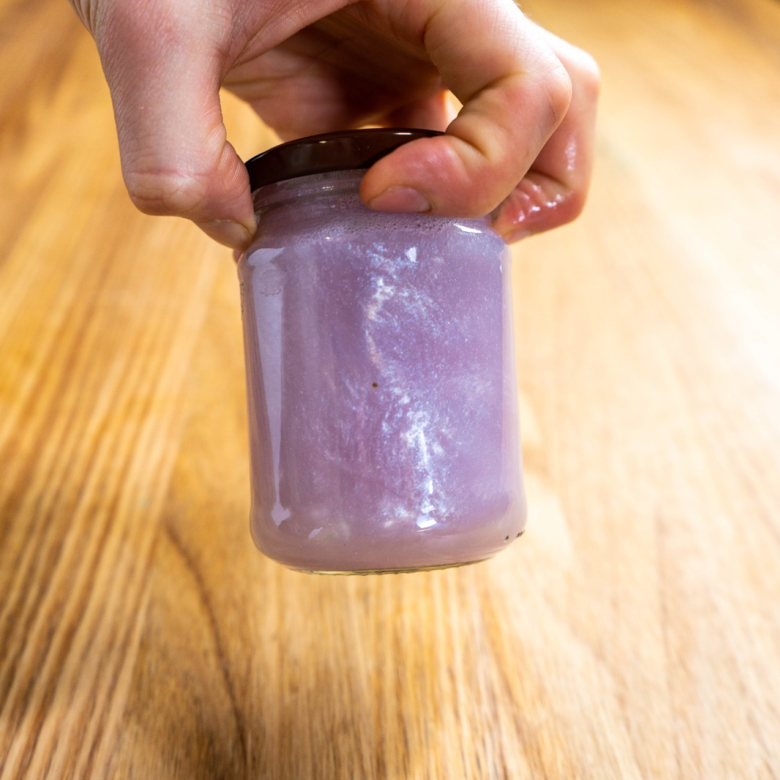You'll need
- At least 3 different fridge magnets
- A fridge or another surface that magnets can stick to (such as a washing machine)
- Flat, lightweight items from around the house such as paper, tissue, postcards and kitchen paper
What to do
- Collect items from around the house that can be used to test the strength of the magnets. Use flat, lightweight Items such as pieces of paper, postcards, tissue or kitchen paper. You can use things that are currently held by magnets on the fridge.
- Pick an item such as a piece of paper and hold it against the fridge.
- Place the first magnet on top of the item and watch what happens. Does the magnet hold it in place or does it move or fall off?
- Repeat step 3 with the second magnet and then the third magnet. What does each magnet do?
- Test each magnet again to see how they hold multiple items such as 2 pieces of paper. How many items can each different magnet hold? Can it hold 1 or 2 or 3 pieces of paper?
- Compare your findings. Which magnet could hold the most items? Which magnets could hold the least?
- Try putting the magnets in order from strongest magnet (can hold up the most items) to the weakest magnet (can hold up the least items).
Questions to ask
Which magnet was the strongest? Which was the weakest?
Can you order the magnets from strongest to weakest?
Can the magnet hold the items up? Why does the magnet hold some things and not others?
What happens if you try with multiple magnets?
What are some similarities and differences between the strongest and weakest magnets?
Why do you think one magnet is stronger than the other?
What's happening
When an item sticks to a magnet we say it’s attracted to the magnet. Some metals including iron, nickel and cobalt naturally attract to magnets. Materials that are attracted to magnets are called ferromagnetic materials. The doors of a fridge are usually covered in a layer of metal or a metallic alloy that is ferromagnetic. This makes it attractive to magnets.
All magnets have distinct north and south poles. When the opposite poles of 2 magnets come near each other they will attract each other (pull together). When the same poles of the magnet come together they will repel each other (push apart). A fridge magnet is made of many small strips of magnet. Each magnet has its poles facing a different direction compared to those on either side of it. This creates an effect where the magnet is quite strong when it is close to something ferromagnetic (such as the fridge). However, it can become very weak if the gap starts to get bigger. This means that most fridge magnets will struggle to hold more than a couple of bits of paper between the fridge and the magnet.
Dion: So hi and welcome to Questacon’s Science Time. I’m Dion
BJ: And I’m BJ. Hi there.
Dion: And today we’re talking about Magnets and Static Electricity. Come and join us.
[Science Time logo]
[Music playing]
[Singing]
Wake up sun and moon, it’s Science Time, it’s Science Time.
Wake up skeleton, it’s Science Time, it’s Science Time.
At home in the bathroom, when we’re swimming there is science,
Outside at the playground, in the sunshine, there is science.
Wake up.
[Science Time logo – Title, “Magnets and Static Electricity”]
[BJ, DION and all the children are sitting around the mat.]
Dion: Who’s got magnets at home? Who’s got magnets at home? Do you have magnets at home? Now, magnets. Where do you find magnets at home?
Child: On your fridge.
Dion: On your fridge. So, do you have magnets on your fridge at home? Do you have magnets on your fridge? You might have the little letters or numbers. Who might have spelt their name with the letters on the fridge?
Child: I don’t have letters on my fridge.
Dion: You don’t have magnets on your fridge? (to children at home) Do you have magnets on your fridge? They are a lot of fun to play with really.
Child: We have names on our fridge.
Dion: You’ve got names on your fridge as well. It’s a lot of fun to have your name on your fridge. We’ve got lots of different magnets here today. So, the first on we’re going to have a look at is this magnet here. So, does any body know what sticks to a magnet? Does any body know? What sticks to a magnet?
BJ: What sticks to a magnet?
Child: A magnet.
Dion: Another magnet? Very well done, another magnet might stick to a magnet. What we might do, we might have a little bit of an experiment. We might see what sticks to a magnet. Now, what we’re going to do… We’ve got lots of things to try to stick to our magnet. The first thing were going to use is a spoon. Now, do you think a spoon is going to stick to our magnet? It’s made of something called metal and we’ll see if it sticks to our magnet. Ready? Were going to say ready, set, go. And I want every one to say ready, set, go with me. So are you ready?
Everyone: Ready, set, go.
Dion: Look at that. The spoon sticks to our magnet. Now, when something sticks to a magnet we call it is attracted or it attract. Can everyone say attracts for me?
Children: Attracts
Dion: It’s a lot of fun. So, when something sticks to a magnet we call it attracted. Now were going to look at some other things to stick to our magnet. We have some wood now. Do you thing wood will stick to a magnet? What do you think at home?
Child: No!
Dion: Well, we’ll have a look. Ready, we’ll test it. Everybody ready to say ready, set, go?
Everyone: Ready, set, go.
Dion: Oh, that doesn’t stick at all, does it? We’ll try again. Ready? No, it doesn’t stick at all. So, wood doesn’t stick to magnets. We’ll put that in a pile for no. So, our spoon sticks to the magnet because it’s metal, but our wood doesn’t stick to the magnet at all. Next we have this thing here. Does anyone know what this is?
Child: A stone.
Dion: It’s a stone. Now, do you think a stone sticks to magnets.
Children: No. Yes.
Dion: Who thinks it does? Who thinks it doesn’t? Who doesn’t really know? Well, lets experiment and find out. Everyone ready to say ready, set, go?
Everyone: Ready, set, go.
Dion: Oh, it didn’t work again. It didn’t stick at all. So, a rock or a stone doesn’t stick to a magnet. That’s because it doesn’t have metal inside it. Now, we’ve got another thing, cardboard or paper. Do you think cardboard or paper sticks to a magnet?
Children: No!
Dion: No? Who thinks it might? Anyone think it might? (to children at home) What do you think? We’ll see what happens, ready.
Everyone: Ready, set, go.
Dion: No, it doesn’t stick either. It doesn’t stick at all really. So, wood, cardboard and rocks don’t stick to magnets. Now, we’ve go other metal here called aluminium. Now, you might have seen metal like this on a meat pie. Or maybe a custard tart or something really yummy. Now, who thinks this is going to stick to the magnet? Anyone think it might stick to the magnet? What do you think? Well, we’ll experiment and find out. Ready?
Everyone: Ready, set, go.
Dion: No, it doesn’t really stick to our magnet at all, does it?
Child: No.
Dion: Now, this is still metal, something called aluminium. But it doesn’t stick to our magnet. So only certain types of metal stick to magnets. So, we’ve got our spoon here and we’ve also got this type of metal. Now, our spoon and this type of metal have got a magnets favourite type of metal which is iron. So, were going to have a look and see if it sticks to our magnet. Ready
Everyone: Ready, set, go.
Dion: Yeah. That one sticks, it sticks. And this is because it’s got iron inside it. So iron is one of magnets favourite types of metal. So the spoon and the piece of metal stick to the magnet. But none of this other stuff does. Now, we have one last thing to test out, another spoon. Now who thinks this is going to stick to the magnet?
Child: Yes. No.
Dion: Maybe?
BJ: It’s made of metal.
Dion: It’s made of metal but it might be made of a different type of metal. So we’ll have a look. Ready?
Everyone: Ready, set, go.
Dion: No, it doesn’t work. It doesn’t stick to our magnet. This is because this is another type of metal. So, it’s only special types of metal that sticks to our magnets. Now, you can get all sorts of different types of magnets. We only got a small one here, but we’ve also got a really, really big one as well. There we are, we’ve got our big magnet here. So we’re going to test out our big magnet and see if it’s any better. So we have lots and lots of magnets here. We’re going to test our magnets and see if they’re better than the others. We’ve got a medium size magnet and when we put it inside our metal you can see that it holds on to quite a bit of metal, doesn’t it?
Everyone: Wow!
Dion: And the metal doesn’t even need to be touching the magnet because of the magnetic force. It travels through all the metal and that’s why we can stick it on like that.
Child :I want to do that.
Dion: You can do that very, very soon. Don’t you worry. And you can do that at home as well. Experiment with magnets. Now this bigger magnet, we’re going to see if it has more metal sticking to it or less. So, ready…
Everyone: Set, go! Wow!
Dion: Wow! Look at that! It got a lot more metal on this big one. So, bigger magnets sometimes hold a lot more metal than smaller ones. We’ve got Two magnets here with two different sides. So, what colour is this one here?
Child: Red.
Dion: Red. And what colour is this side here?
Children: Blue.
Dion: Now, magnets have two sides. Who thinks that these magnets might stick together? You think these magnets might stick together? Well, we’ll have a look. We’re going to try to stick a red bit to a blue bit and we’ll see if they stick together. Are you ready? (sticks magnets together). Look at that, they do stick together. So the red and the blue bit, the bits that are different, are attracted. Aren’t they? They’re attracted. Now we’re going to try to stick a blue bit to a blue bit. Do you think they’re going to stick together?
Chid: Yes!
Dion: What do you think at home?
BJ: Do you think they’ll be attracted to each other?
Dion: Well, we’ll have a look, are you ready? Let’s see if we can stick them together. Oh, there not really sticking together at all. If I put them on the paper here, what we can see is that if I put the blue bit near the other blue bit it does something called repel. Now, can everyone say repel for me?
Everyone: Repel.
Dion: Repel.
Child: My magnet has a bit like that.
Dion: It’s got a bit like that, does it?
Child: This is what my magnet does.
Dion: All magnets have a bit like that, you see. So, they can stick together if you’ve got two different bits. They stick together. And if you’ve got two bits that are the same they repel. There we are.
Child: And mine move.
Dion: They do move as well, don’t they?
BJ: And yours repel as well.
Dion: So you can try that at home. You can try to see if your magnets repel or attract each other. So, we’ve got lots of different magnets in Science Time today. Some attract and some repel. Now magnets aren’t the only things that attracts. We also have static electricity that attracts as well. Now, one way that you can have static electricity – has anyone been down a slippery-dip and got a zap from the slippery-dip?
Children: Yes.
Dion: Or maybe you might been on a trampoline and touched the metal part and got a zap as well. That happens because of static electricity.
Child: And I hurt my… and I hurt my… I scraped a little bit of…
Dion: Sometimes it can be a bit dangerous, but that’s alright. Static electricity is very, very safe here at Science Time. What we’re going to do; I’m going to rub this on someone’s head and we’re going to see if we can get some static electricity working, and this balloon is going to be attracted to hair. Ready? So we’ll rub it on hair there: rub, rub, rub, rub, rub. And when we let go, it sticks to the hair. It’s attracted. And it works really, really well with my hair because I have a lot of hair. So if you rub it on your hair; rub, rub, rub, rub, rub. It is attracted because of the static electricity.
Child: You’ll have to have a bath to…
Child: I’ve got a lot of hair as well.
Dion: You’ve got a lot of hair as well. So you can have a go at that at home. You can get a balloon and try to rub it on your hair and stick it to your head. We can have a go at that in Science Time as well; fantastic. So, we have lots of different things to play with in Science Time.
Child: And magnets.
Dion: And magnets as well. So, ready, set go. Find a grown-up and explore the room.
[FREE TIME]
BJ: While everyone here is playing, I want to show you something special here at Questacon. Come with me. I’m here in Questacon’s Awesome Earth gallery at our Caged Lightning. Have you ever seen lightning during a thunderstorm? Lightning is made when little ice particles in the clouds rub together, building up static electricity. It builds up and up and then escapes the cloud in a big bolt of lightning. Here at Questacon we can make our own lightning using a Tesla Coil. Inside the coil the static electricity builds up and up and comes out as lightning. Let’s have a look. Wow, that was really exciting! Let’s go back to Science Time and check out what everyone’s up to.
Dion: So, what we have here, we have some balloons and also an octopus made out of string.
BJ: Here’s our octopus.
Dion: So the first thing we’re going to do, we’re going to get our octopus and rub the octopus with some cloth. Friction, which makes static electricity. So we’re going to rub, rub, rub, rub, rub as best we can. There we are. Now, BJ is going to rub the balloons now. Make some more static electricity. Just like when we were rubbing the balloons on our hair, this makes lots of static electricity.
BJ: Rub, rub, rub, rub, rub
Dion: Now, in this experiment static electricity is actually going to repel. So this octopus is going to look like it’s floating in the air because these balloons are going to repel them.
BJ: Shall we stand up for this one?
Dion: Yes, I think we might have to stand up for this one.
Child: It’s going to float. It’s going to float.
Dion: Yes, it’s going to float. So, do you want to stay sitting down for me. Sitting on your bottom
BJ: Stay sitting down, sweetheart.
Dion: And, we’re going to now take the octopus and see if we can make it fly. Ready, set, go! There we are.
BJ: Wow, look. And I can put it on you. There you go.
Dion: There we are. And you can see the octopus was repelled by the balloons but attracted to hair. We’ll rub this, rub, rub, rub.
BJ: Dion can do it.
Dion: There we are. We’re going to give BJ this now this one here so she can rub her stuff.
BJ: I’ll build up the static on the balloons.
Dion: Just like with your hair before. Rub, rub, rub. Make lots of static electricity. And we’ll try this once more. Are you ready? O.K. So, everyone together.
Everyone: Ready, set, go!
BJ: Wow.
Dion: There we go. Now, the octopus is attracted to people but repelled by the balloons. Fantastic work.
BJ: Thank you, Dion.
Dion: Thank you, BJ. So, for everyone here, and everyone at home as well, we have a colouring in sheet that you can have. People at home can down load this one from our website and you can each have one to take home. We’ve also got some other stuff. We’ve also got some parent information sheets, as well. There ones are also on our website and we’ll bet BJ to give those out to the parents. There we are. We’ve also got lots of different things for you to take, some colouring in pictures. Lovely work. And we also have to say goodbye to everyone at home. So, can you all look at the camera for me and say “Goodbye”.
Children: Bye, bye.
Dion and BJ: See you next Science Time.






